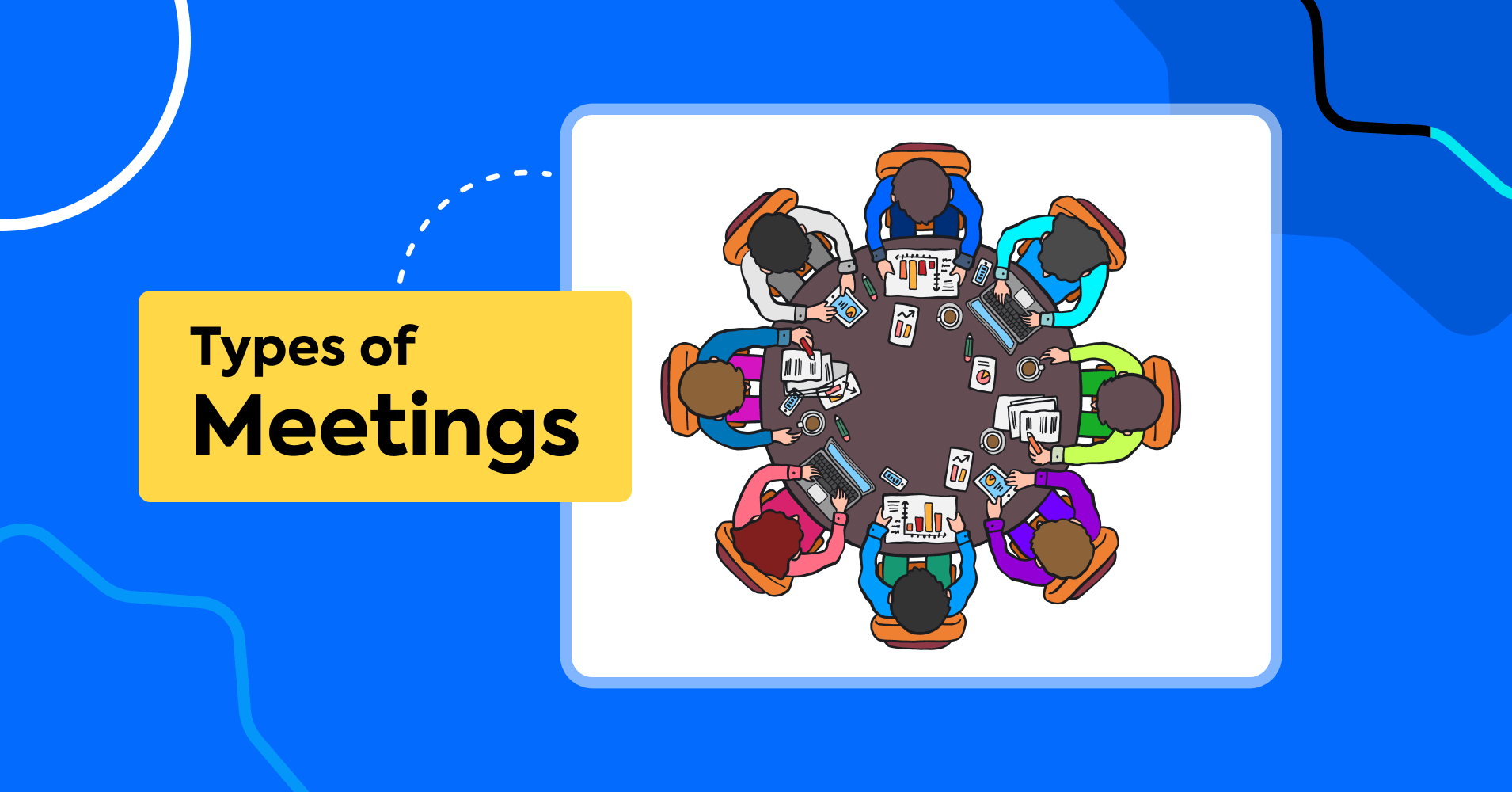
10 Types of Meetings and Tips to Make the Most of Them Everytime!
In the hustle and bustle of today’s fast-paced world, time stands as a valuable asset. Hence, it’s essential to make every minute of a meeting productive and well-invested.
However, these stats below about meetings might shock and let you down!
- Executives report that 45% of meeting agendas lack a clear purpose
- 71% of senior managers said most meetings are inefficient and ineffective
Why, you may ask? That’s because they are often poorly organized and take too much time.
To make the most out of meetings, you need to understand the types of meetings and choose the right type for your organization.
This article will walk you through the most common types of meetings and provide tips for extracting the most out of them.
Let’s read on to find out!
Meetings: Formal Meeting vs Informal Meeting
Meetings can be formal or informal, depending on the situation. Let’s look at their differences:
| Formal meetings are more structured and organized. They have a written agenda, along with specific times and locations allocated for discussion. | Informal meetings are more flexible and spontaneous. They encourage brainstorming and rapid problem-solving through free-flowing ideas. Almost all meetings that take place in an organization are informal. |
10 Different Types of Meetings and Tips to Get the Most out of Them
In this section, we will explore the 10 types of meetings and discuss tips regarding how you can use them to solve problems, make decisions, and establish goals.
Brainstorming Meetings
The purpose of brainstorming sessions is to innovate. It’s a collaborative process that generates new and creative ideas. Co-workers usually exchange ideas during brainstorming meetings in a relaxed, informal environment where they won’t feel judged or mocked.
Every participant should have an equal voice to contribute to brainstorming meetings. Begin by selecting one person. To trigger their creative spark, encourage him/her to throw new team meeting topics around and then ask other participants to give their thoughts on each idea.
Tips to get the most out of brainstorming meetings:
- Plan your meeting ahead of time and set the ground rules
- Clarify the goal or problem you are trying to solve
- Provide feedback only after others have clarified their ideas
- Identify the brainstorming technique that is most appropriate for your situation
- Decide on your next steps after considering your findings
- Do not discourage the sharing of ‘terrible ideas’
- Reject unrealistic ideas
- Communicate what needs to be done to every team member
Management Meetings
A management meeting brings together the top-level managers of a company or, at larger organizations, a department responsible for managing the company. Company leaders, engineering managers, or product managers usually attend management meetings. Weekly management meetings typically follow a fixed agenda and take place at the same time and day every week.
Tips to get the most out of these types of meetings at work:
- Discuss and review the company’s Key Performance Indicators (KPI) and common metrics (such as revenue, customer satisfaction, client retention rates, and profit margins)
- Follow up on key customer accounts
- Ask each department to provide an update on the performance
- Make an annual goal and target evaluation
- Review and approve HR policies that affect the entire organization
- Identify priorities and discuss progress
- Examine the issues that affect the growth of the company and discuss how to fix them
Decision-Making Meetings
A decision-making meeting is one in which a decision is formalized, and the next steps are iterated. It is often led by a team leader to ensure that members make the right decisions. They follow a structured agenda.
Whenever you facilitate such meetings, you should ensure the chief decision-makers aren’t the only ones controlling them. It is definitely valuable for them to contribute, but you can increase the efficiency of these meetings by involving subject matter experts and other team members. The more, the merrier!
Tips to get the most out of decision-making Meetings:
- Identify the topic of the meeting at the beginning
- Take the time to gather all the necessary information to make an informed decision
- Assess the viability of proposed solutions using facts
- Keep tabs on time to prevent going off track
- Assign meeting roles ahead of time to manage questions, suggestions, and references
- Develop well-informed contributions from the team to help you achieve your objectives
- Keep in mind that everyone may not unanimously agree upon the final decision
Problem-Solving Meetings
In problem-solving meetings, specific issues or challenges are discussed, and solutions are developed. Some problems may be project-related, while others may be related to workplace operations or the day-to-day workflow. Problem-solving meetings allow for diverse viewpoints to be offered, and everyone feels ownership of the final outcome.
Tips to get the most out of Problem-Solving Meetings:
- Ensure that all contributions are equally valued
- To arrive at the end goal, analyze the available options after reviewing the situation (what caused the problem, what resources are available to solve it, etc.)
- Determine the root cause of the issue to prevent a recurrence
- Make a list of the areas in which your organization’s systems are lacking and discuss how to improve them
- Develop a plan for implementing new technologies that will improve efficiency
- Determine the best method for handling customer complaints regarding defective products or services
Retrospective Meetings
Teams hold retrospective meetings after the completion of a project to evaluate their progress. The team comes together and discusses the project’s successes and failures and what needs to be improved for the next one.
Why hold in-person retrospective meetings when you can efficiently gather your team remotely, with each participant comfortably attending in their own time zone? FluentBooking makes it easy for you to do so!

Make meetings easier by converting local time for your team players and letting them book appointments on their own terms.
Curious about how it works? Review this documentation to learn how to schedule a booking, and you’ll be set up in no time!
Tips to get the most out of retrospective meetings:
- Take a look back at the milestones you’ve reached with your team
- Provide insights on how you overcame any obstacles encountered during the journey
- Examine a completed project for improvement opportunities
- Develop future plans based on your reflections on the project
- Bring in new meeting formats to enhance your retrospectives and get valuable feedback from all participants
- Create a safe environment for teams to share feedback and raise concerns through a constructive discussion
One-on-One Meetings
A one-on-one meeting takes place between two individuals. It has a specific purpose. When deciding the types of meetings to conduct at work, one-on-one meetings are a good option as they allow managers and employees to have a more intimate conversation regarding their work performance and other work-related topics.
Researchers found that regular one-on-one meetings promote a sense of belonging and fun among remote employees.
Tips to get the most out of One-on-One Meetings:
- Make sure the participants know what to expect from the meeting
- Consider potential discussion points in advance
- Let team members communicate openly so they feel empowered and confident
- Discuss about career development and work preferences
- Be prepared with questions or relevant information if the meeting is about a particular topic
- If it is a 1:1 feedback meeting, provide transparent, straightforward, and actionable feedback
- Stay up-to-date by reviewing previous notes and tracking progress before the meeting
To simplify your one-on-one meetings, consider using a meeting booking software such as FluentBooking to streamline your schedule coordination.
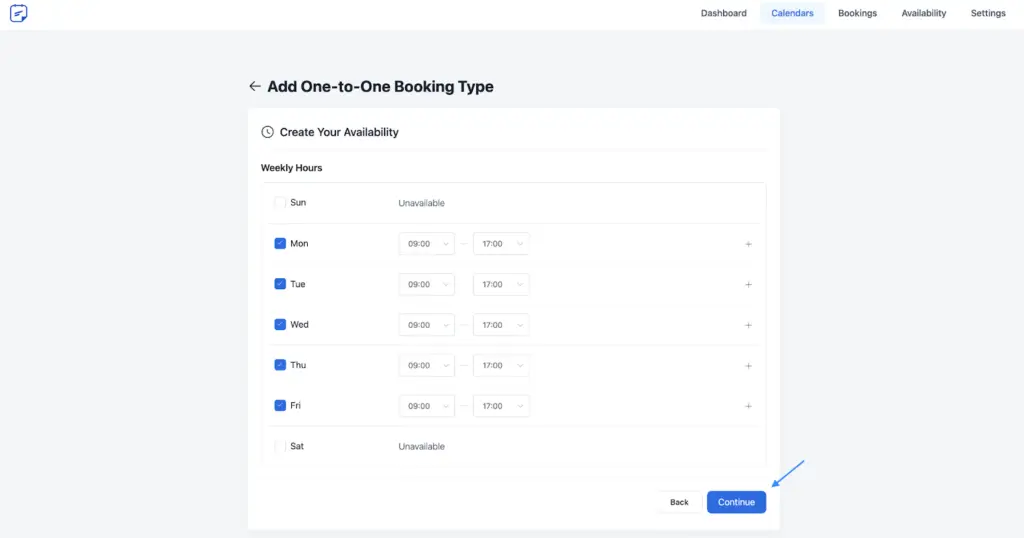
Work smarter, not harder!
Status Update Meetings
Status update meetings are held regularly to report on the progress of the team’s work. Status update meetings serve one purpose: to keep everyone up to date on what is happening in the organization.
During these types of meetings, facilitators discuss the progress made so far, fix any issues, adapt plans if necessary, and outline future steps.
Tips to get the most out of status update Meetings:
- Let the top performers share their views on what has worked well on a project
- Provide ample time for questions and establish a common goal
- Make sure all members of the team are up-to-date on what task is being undertaken by everyone else (and the team as a whole)
- Communicate progress, challenges, and next steps with the team to maintain alignment
Team Building Meetings
These types of meetings aim to gather the entire team together. You can enhance team collaboration through team-building meetings. They can boost trust and cohesion and strengthen relationships among team members. The result is a reduction in turnover rates and an increase in productivity.
Also, using employee engagement software helps HR teams boost collaboration, track participation, and engage hybrid or remote teams
Studies show that fully engaged teams can generate twice as much revenue!
Tips to get the most out of Team Building Meetings:
- Ensure that the meeting is focused on its objectives
- Ensure that the meeting room is large enough to accommodate all participants
- Engage participants in a fun and lively atmosphere
- Discuss topics relevant to the whole team
- Make sure everyone contributes their ideas
There should be a serious approach to these meeting types at work. Organizing team-building meetings is more efficient and enjoyable with automated scheduling software. They can facilitate your company to foster collaborative team dynamics and optimize team productivity.
Training Meetings
The training session meeting is the most crucial type of meeting at work for skill development. It is primarily intended to transfer knowledge and skills. Employers may conduct training meetings as part of the onboarding process. Employees can also benefit from these meetings in numerous ways, such as improving their performance, learning new perspectives, and understanding how to use a product correctly.
Tips to get the most out of training meetings:
- These types of meetings should have clear objectives and outcomes
- Ensure a smooth and engaging flow between topics and activities
- Ensure that all necessary content is covered by allocating your time efficiently
- Make sure that participants are aware of the training session’s objectives and goals
- Maintain focus and accountability during training
All-hands Meetings/Town hall Meetings
The purpose of town hall meetings, also known as all-hands meetings, is for organizational members to gather in a town hall to discuss ideas, provide feedback, and express their opinions on the management and vice versa. Meetings like these provide a great opportunity to bring together business leaders from all levels.
It’s also an ideal forum to share important information with everyone, whether it’s updates on company strategy, new initiatives, or even technical topics such as implementing dedicated IP.
Tips to get the most out of these types of meetings at work:
- Establishes a relationship between team players and senior management
- Inform the participants about the business updates from the past month, quarter, or year
- Develop and implement a strategic plan that aligns with the company’s mission
- Recognize milestones and celebrate those who have contributed and achieved them
- Share noteworthy news like mergers, restructurings, or public offerings
- End with a Q&A session that allows employees to speak directly to company leaders
What are the 6Ps of Meetings?
If you are setting up and preparing for different types of meetings at work, it is a good idea to follow the 6Ps of meetings as a checklist for guidance. The 6Ps are a set of six fundamental questions: why, who, what, when, where, and how.
Let’s examine the 6Ps of meetings and how they can be applied to the types of meetings at work.
- Purpose: Set a clear meeting objective and ensure everyone knows why the meeting is being held. This will give others time to prepare and be proactive during the discussion of the problems that need to be resolved.
- Players: An essential component of any meeting is the players, i.e., the participants who will attend the meeting and have something valuable to contribute. For a meeting to be efficient, make sure all players engage and contribute actively.
- Priority: Consider two factors when making your priority list: the order in which you would like things accomplished and the importance you place on each item. This approach will help ensure that the most important items are discussed first.
- Process: As part of your meeting process, follow an agenda, stay focused on the task at hand, take notes, and make decisions as appropriate.
- Preparation: As the saying goes, ‘By failing to prepare, you are preparing to fail.’ Ensure all participants are aware of the purpose and agenda of the meeting. By doing so, they can gather relevant information and arrive prepared to contribute to the meeting.
- Progress: Ensure progress toward the established purpose. The smooth progress of the meeting will be assured if participants remain focused on the agenda and avoid unnecessary distractions.
Let’s Make Meetings More Productive!
Choosing the suitable types of meetings for each specific purpose is vital. Hence, it is essential to consider the purpose, goal, and meeting design when arranging a formal or informal meeting.
Using an automated booking system can make your meetings more efficient, responsive, and hassle-free. Using effective management strategies and the right online tools can help you avoid unproductive meetings and run collaborative sessions that motivate your team toward success.
So go ahead and plan your meetings the right way. Let’s make all our meetings more productive!
Maisha Abedin
Hey, it’s Maisha! I enjoy crafting stories and producing content that adds value to readers. Outside of work, you will either find me capturing the beauty in the mundane or daydreaming about the perfect lasagna!
Table of Content
Subscribe To Get
WordPress Guides, Tips, and Tutorials





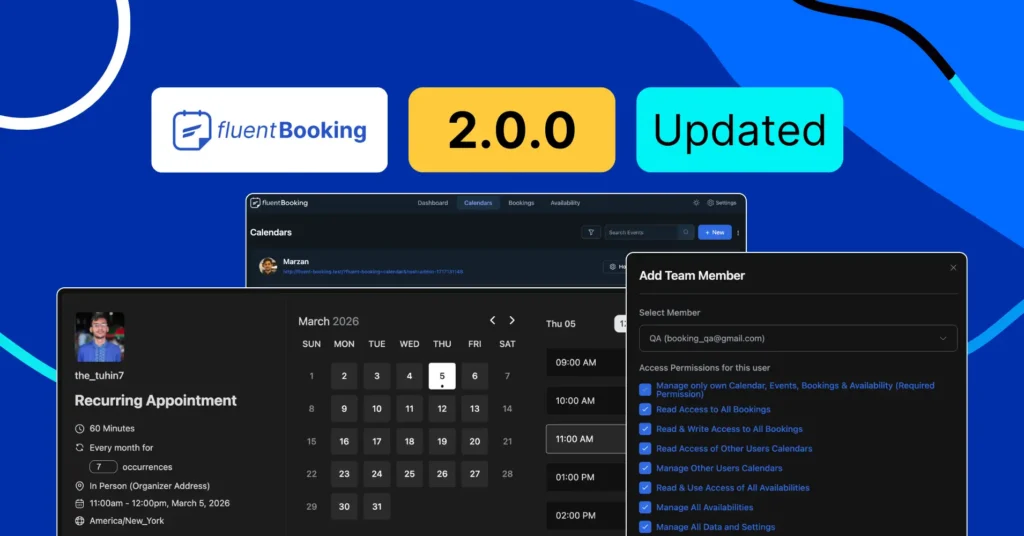
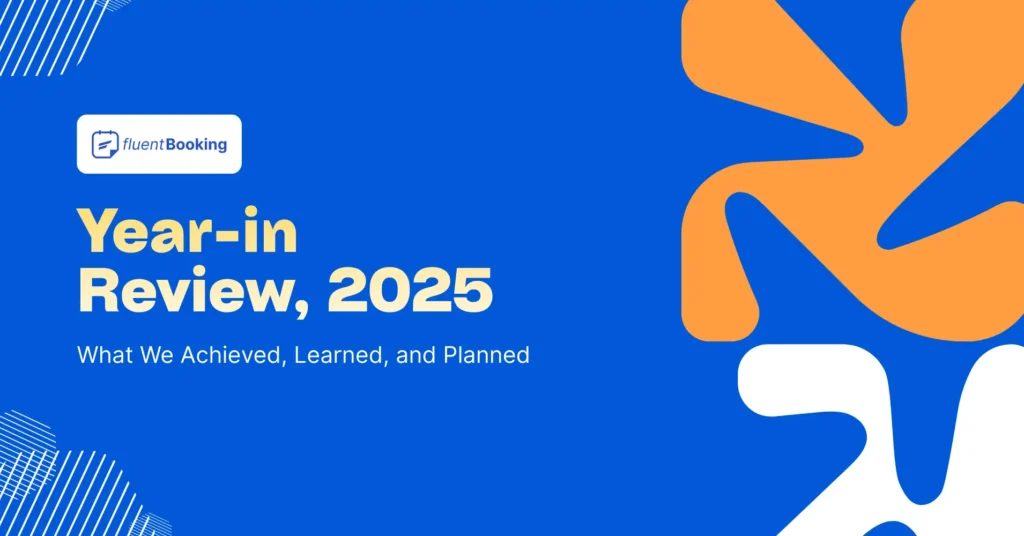

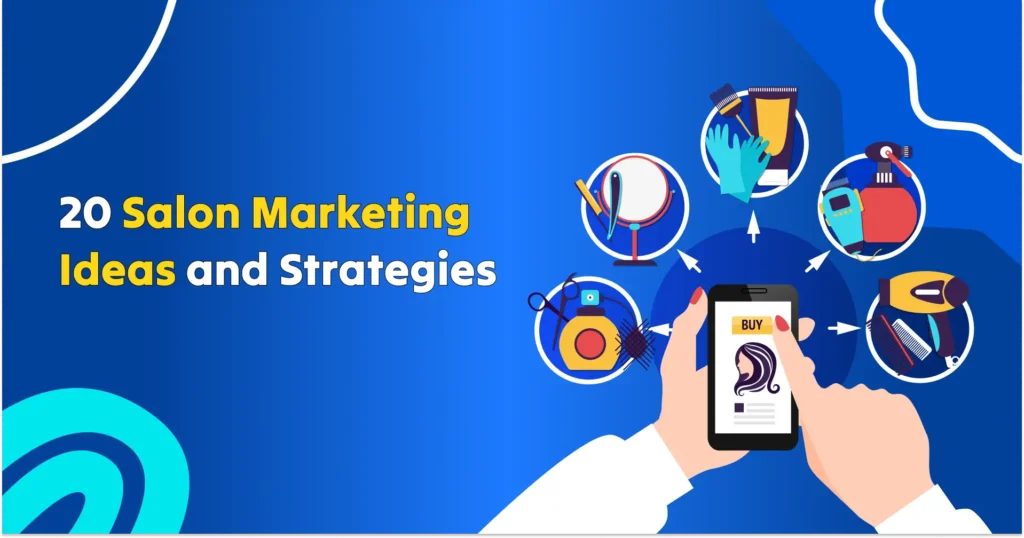


Leave a Reply